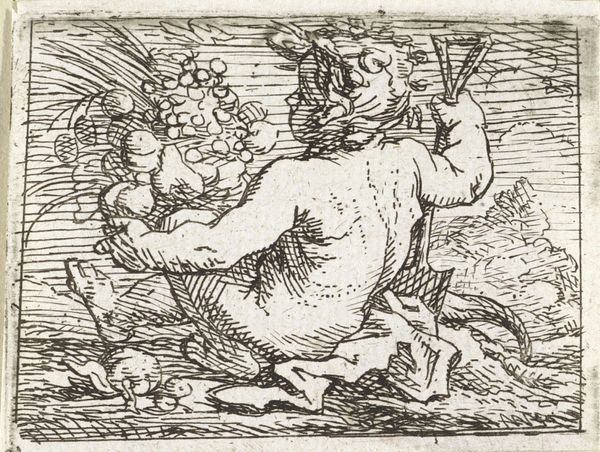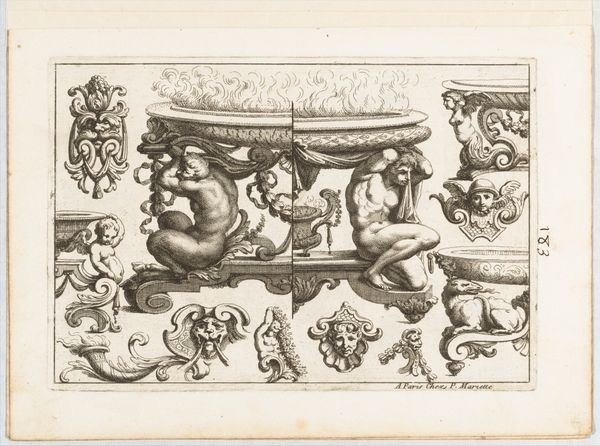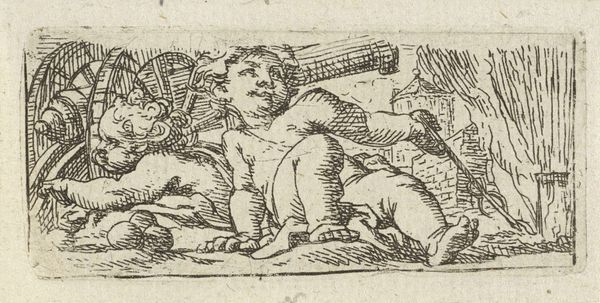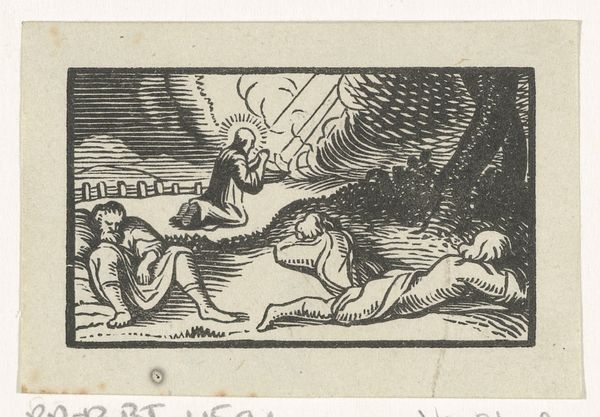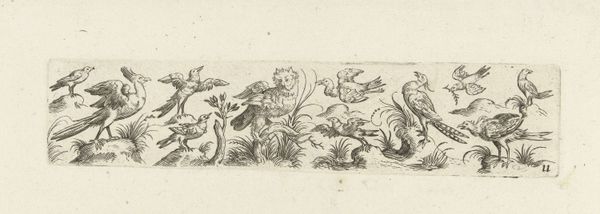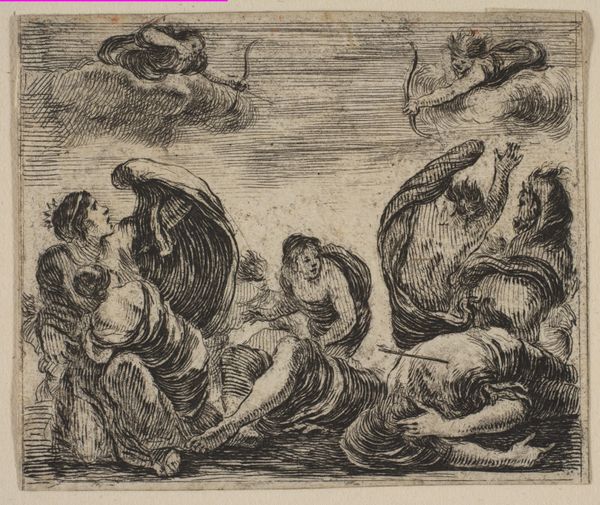
print, etching
#
baroque
# print
#
etching
#
figuration
#
child
#
genre-painting
Dimensions: height 28 mm, width 98 mm
Copyright: Rijks Museum: Open Domain
Curator: Ah, a print depicting "Three Naked Children Playing," attributed to Cornelis Schut, likely created sometime between 1618 and 1655. It's an etching, part of the Rijksmuseum collection. My first impression is one of playful chaos, actually. Look at the energetic lines—they really capture a sense of movement. Editor: There's certainly dynamism here, but for me, the "naked children" theme immediately calls up questions about innocence, vulnerability, and the historical gaze. Who were these images really *for*, you know? This is an artist who primarily completed pieces about Catholicism and the imagery used often seems fetishistic today. How do we interpret this portrayal, especially in the context of power dynamics? Curator: Well, within Baroque sensibilities, there’s always that inherent theatricality and drama, heightened emotion, but I don't necessarily see any indication of sexualization of children. Genre paintings were increasingly popular, showing scenes from everyday life – and this looks to me as the artist wanting to get at something fundamentally *human*, the primal joy of play. I would suggest seeing children with an urn or cauldron, also implies alchemic rituals. There is plenty more happening. Editor: I hear that, and the alchemy references makes me reconsider, yet it's difficult to divorce historical artistic depictions from broader societal norms. It can imply that children should be playing and not be productive people to benefit economic success. Curator: Perhaps the artist invites us to examine the dualistic nature, where a scene appears playful on the surface but carries symbolic depths, also pointing us toward larger themes within societal norms themselves. It may make us wonder about children today versus in the 1600's and their importance. It seems he asks more than suggests with the way the artist drew the figures with detail. Editor: Okay, the focus on alchemy rituals as related to childhood play as a space for dualistic understanding and potential to develop complex perspectives certainly pushes me to be more hopeful with how the viewer should examine the artwork today, given our increased focus on diversity, inclusion and safety for children. Curator: Exactly! The continuous lines give this depth, the chaos represents development, which should allow growth within individuals to promote community values as related to inclusion. The image can grow on you with new understanding. Editor: Agreed, thinking about its relation to a collective cultural history asks some deeper questions.
Comments
No comments
Be the first to comment and join the conversation on the ultimate creative platform.

